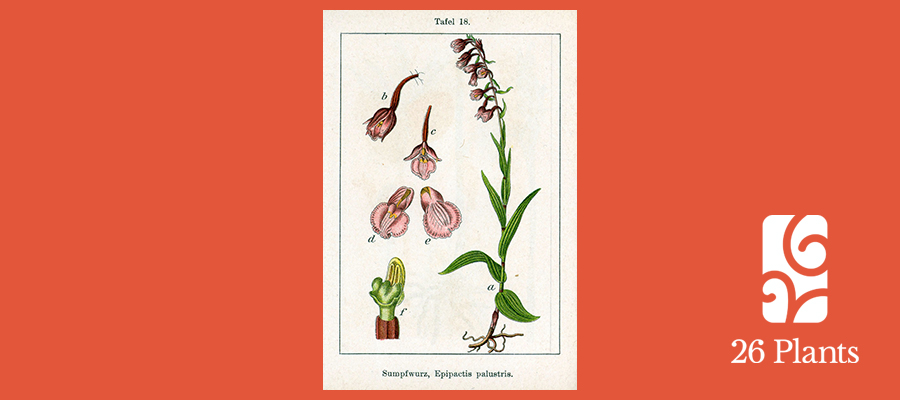Marsh Helleborine
Epipactis Palustris
Abi Siri Andersen

Last Dance
We can-can over wetlands and dune slacks,
rare orchid of fens,
short, proud Marsh helleborine,
uncommon wildflower.
Dancing in unison across the sand,
shimmying through long grass,
our opulent flowers on upright stems.
Silk skirts in umber magenta maroon,
cream frilly-lipped petal petticoats
under pink sepal wings.
Kicking up from chalky soils,
swigging spirit from alkaline springs on the (limestone) rocks,
dazzling local wasps, hoverflies, ants.
Epipactis palustris
– ‘milk-curdler of marshes’ –
can our beauty really curdle milk?
Perhaps, now our stage decays,
our high-kick days are done.
Please fix the falling beams
with a standing ovation – an ‘encore!’
We can-can.
The Marsh helleborine, or Epipactis palustris, is a beautiful little orchid that lives in wetlands, fens and the low-lying areas of sand dunes. The genus name “Epipactis” is an ancient Greek name for a plant believed to curdle milk, and “palustris” signifies its preference for marshy habitats. Beyond the British Isles, it currently grows across Europe, from Scandinavia to the Mediterranean shores of Spain, Portugal, Italy and Greece. However, this fragile orchid is on the decline due to habitat loss, as wetlands, fens and marshes are under threat from pollution, drainage and development.
Although difficult to spot at first, once found this flower seems to grow in profusion and can carpet marshy ground with breathtaking displays. Standing up to 50cm tall, the Marsh helleborine has reddish stems, with loose clusters of pinky-purple or creamy green flowers that bloom from July to August. Its leaves are broad and oval at the base, narrowing up the stem. The petals are exquisite, with a cream, frilly lip and reddish sepals resembling wings.
These orchids thrive in various wetland ecosystems and owe their existence to specific ecological conditions. This includes habitats that are submerged in water during winter and that maintain high moisture levels throughout the summer. Colonies are often nourished by alkaline springs running through limestone rocks, with chalky soil playing a pivotal role. They are pollinated by small wasps, hoverflies, and ants and propagate through new shoots on their rhizomes.
Unfortunately, I didn’t manage to meet the Marsh helleborine in person, although I looked for it throughout July and August. And so I wrote this poem based on photos and descriptions that I found online. I wanted to describe these plants as a troupe of can-can dancers, whose theatre (habitat) is about to collapse (is being destroyed by pollution, drainage, development). I also wanted to end on a positive and hopeful note – a call for the audience (us) to stand up, applaud and shout for more (raise awareness, make some noise) to fix the broken theatre – I won’t labour the analogy any more than I already have – you get the picture!
Image: Illustration by Jacob Sturm, from Deutschlands Flora in Abbildungen, under Creative Commons license
